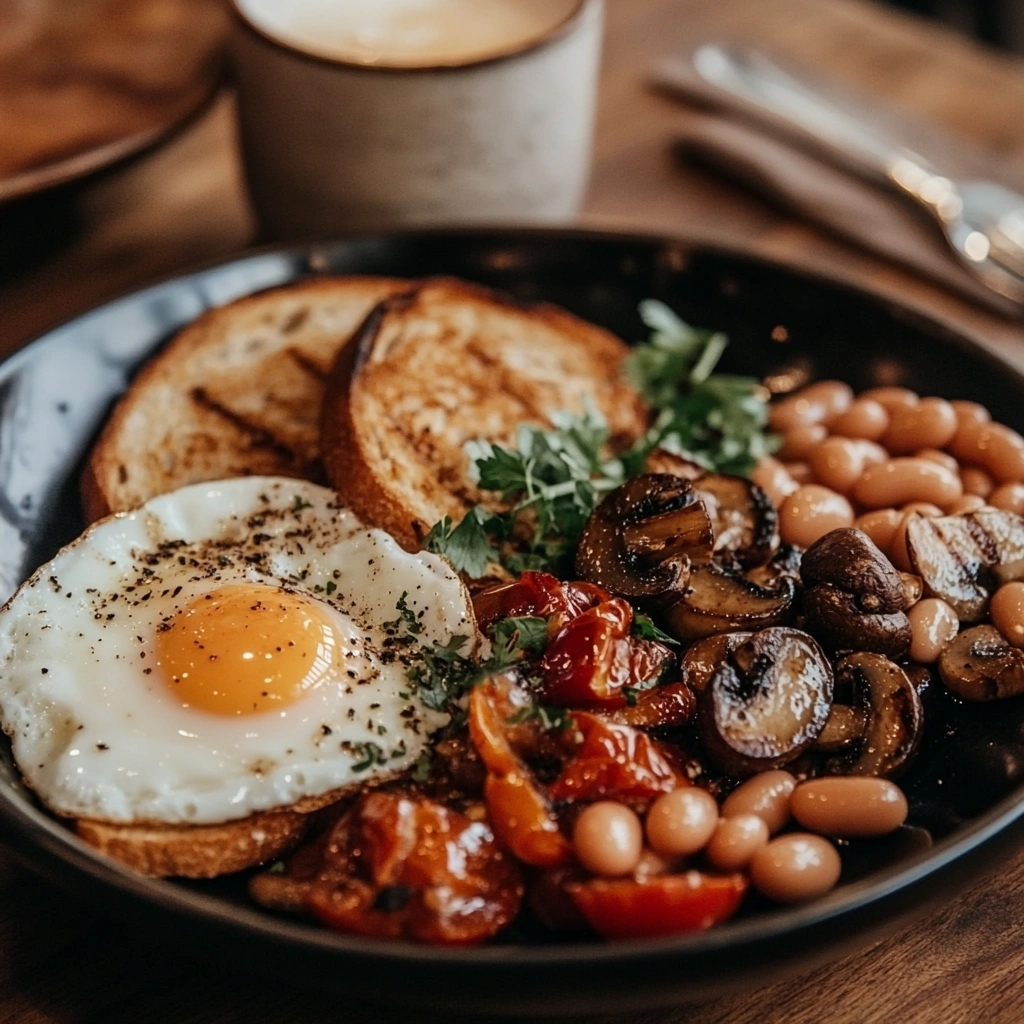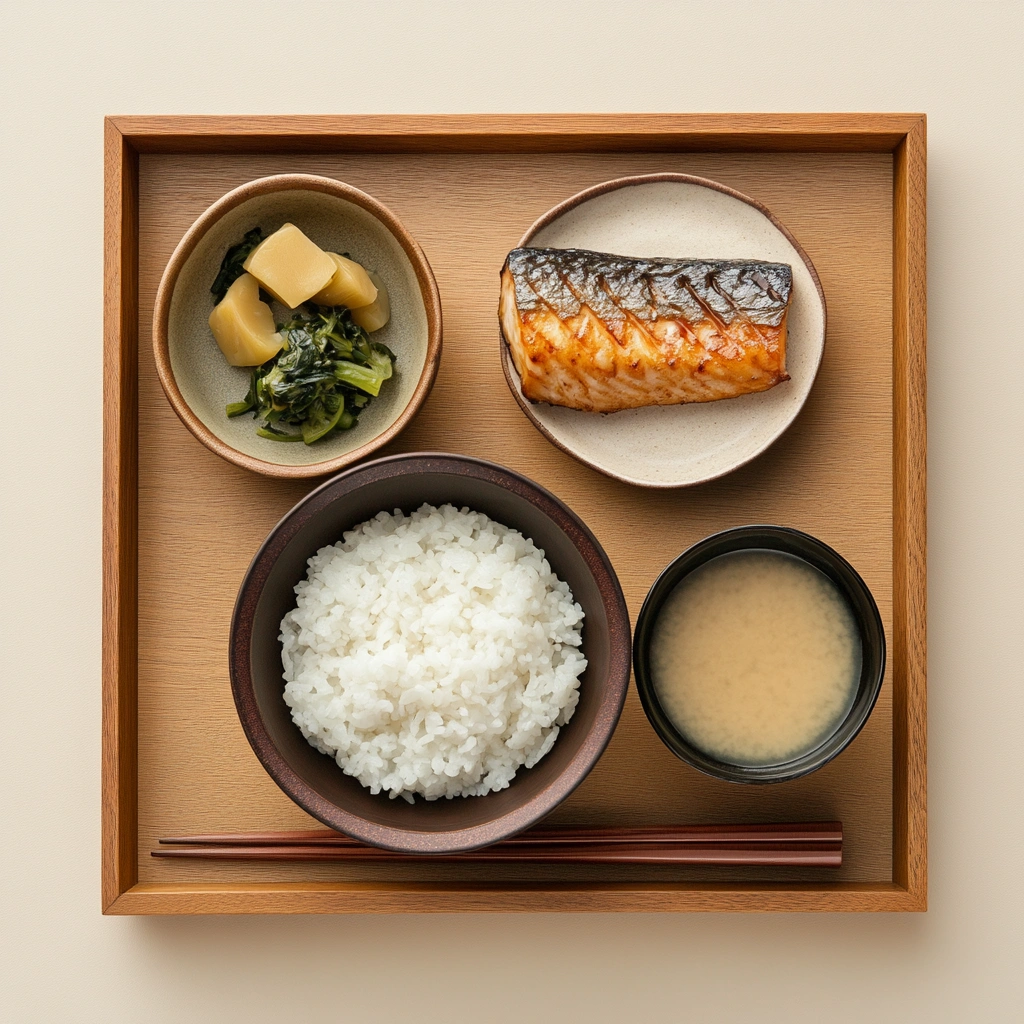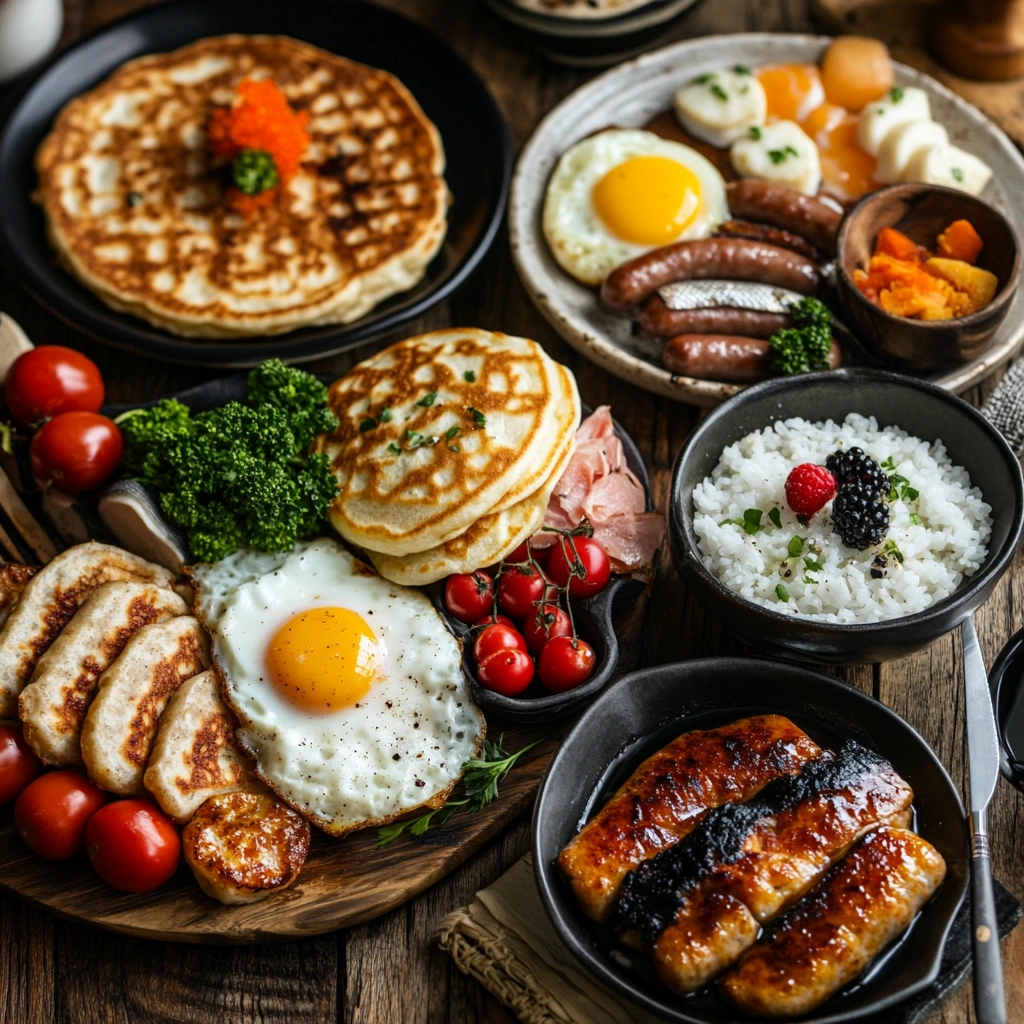Introduction
When it comes to traditional breakfast dishes, cultures across the globe take pride in their morning meals, presenting flavors, ingredients, and stories unique to their regions. From hearty spreads to simple yet soulful plates, breakfasts reflect cultural identities and values. But what are 3 traditional breakfast dishes that have stood the test of time and still resonate today? Let’s explore three of the most iconic breakfasts: the classic English breakfast, American pancakes, and the delicate Japanese morning meal. Each holds a unique place in culinary history, and this article will take you through their components, preparation, and cultural importance.
Part 1: Exploring Traditional Breakfast Dishes
Traditional English Breakfast
The traditional English breakfast is often regarded as one of the most iconic morning meals worldwide. Originating in the United Kingdom, this robust breakfast has evolved into a cultural staple that warms hearts and fills bellies. It’s not just about food; it’s an experience, one that binds tradition with the joy of a hearty meal.

Ingredients of a Full English Breakfast
What goes into a Full English breakfast? The beauty of this dish lies in its combination of multiple components, making it a satisfying and wholesome plate. Traditionally, it includes eggs—fried, poached, or scrambled—alongside grilled tomatoes, sautéed mushrooms, and a serving of hearty baked beans. Sausages and hash browns round out the meal, providing a burst of flavor and texture.
One distinguishing feature of this breakfast is the use of grilled or fried bread, often crisped up to perfection. While many modern versions adapt the ingredients, the original lineup remains timeless and versatile. Each bite combines savory elements with the subtle sweetness of tomatoes and beans.
How to Prepare a Full English Breakfast
Preparing a Full English breakfast requires a bit of coordination, but the process itself is rewarding. Start by cooking the sausages and hash browns in a skillet, as they need the most time. While those cook, grill the tomatoes and mushrooms to retain their natural juices. In a separate pan, fry the eggs until the edges crisp up just right, or scramble them if you prefer a softer texture.
Toast or fry slices of bread in butter to achieve that golden-brown crispness. Finally, warm up a generous helping of baked beans, and assemble the meal on a large plate. It’s important to serve the breakfast piping hot—after all, nothing compares to the warmth of a traditional English breakfast fresh off the stove.
Cultural Significance of English Breakfast
The English breakfast is more than just a morning meal—it’s a symbol of hospitality and tradition. Historically, it was served to showcase wealth and abundance in English households, particularly during the Victorian era. Farmers, laborers, and aristocrats alike relied on its hearty ingredients to fuel their day.
Today, the dish transcends its roots and is enjoyed across the globe. Hotels and restaurants often feature it as a staple, offering a taste of British culture to travelers. Whether enjoyed on a leisurely Sunday morning or shared during family gatherings, the English breakfast remains a cherished culinary tradition.
American Pancake Breakfast
The American pancake breakfast is a classic that has earned its place on breakfast tables worldwide. Light, fluffy, and irresistibly delicious, these pancakes are simple to prepare yet pack a punch of comfort and nostalgia. Unlike heavier breakfasts, pancakes strike the perfect balance between indulgence and satisfaction, making them a popular choice for families and food lovers alike.
What Makes American Pancakes Unique?
What sets American pancakes apart from other global variations is their texture and simplicity. Unlike the thin crepes of Europe or the savory pancakes of Asia, American pancakes are thick, fluffy, and almost melt-in-your-mouth. This is achieved by using leavening agents like baking powder, which gives them a soft, airy rise.
Another defining feature is their versatility. While traditional toppings include maple syrup and butter, American pancakes are a blank canvas for creativity. Fresh fruits, whipped cream, and chocolate chips are popular additions, appealing to sweet tooths and health-conscious eaters alike.
Key Ingredients and Preparation Steps
The beauty of American pancakes lies in their fuss-free preparation and minimal ingredients. All you need are:
- All-purpose flour
- Milk (or plant-based alternatives)
- Eggs
- Baking powder
- Sugar
- Butter or oil for cooking
Step-by-Step Preparation:
- Prepare the Batter: In a large mixing bowl, whisk together flour, baking powder, sugar, and a pinch of salt. Make a well in the center and add milk and eggs, gently folding the mixture until smooth. For extra fluffiness, avoid overmixing the batter.
- Heat the Pan: Preheat a non-stick skillet or griddle over medium heat and lightly grease it with butter or oil.
- Cook the Pancakes: Pour small amounts of batter onto the pan to form circles. Watch for bubbles forming on the surface—this is the perfect cue to flip! Cook for about 1-2 minutes on each side until golden brown.
- Serve with Toppings: Stack the pancakes high and top them with a generous drizzle of maple syrup, fresh berries, or even a dollop of whipped cream for that extra treat.
Pancakes and Their Role in American Culture
Pancakes have been a beloved part of American breakfast culture for generations. They’re a weekend tradition in many households, where families gather to enjoy stacks of warm, syrupy goodness together. Historically, pancakes became a symbol of abundance, particularly during Shrove Tuesday (Pancake Day), as they used up pantry staples like flour and eggs before Lent.
Beyond the home kitchen, pancakes have become a staple in diners and breakfast joints across America. From towering stacks to “all-you-can-eat” challenges, they represent comfort, indulgence, and a sense of home. Whether enjoyed plain or loaded with toppings, pancakes remain a timeless and cherished morning dish.
Traditional Japanese Breakfast
The traditional Japanese breakfast is a beautiful symphony of flavors, textures, and health benefits. Unlike Western breakfasts that often lean towards heavy or sweet options, Japanese morning meals focus on balance, simplicity, and nutrition. Rooted in centuries-old culinary traditions, this breakfast reflects the harmony found in Japanese culture and cuisine.

What Does a Traditional Japanese Breakfast Include?
A traditional Japanese breakfast is composed of several small dishes, carefully arranged to provide a balanced and nourishing start to the day. The core components include:
- Steamed White Rice (Gohan): A staple in every Japanese meal, steamed rice forms the foundation of the breakfast. It’s simple, filling, and pairs perfectly with other dishes.
- Miso Soup (Misoshiru): A light, umami-rich soup made with miso paste, seaweed, tofu, and green onions. It’s warming, savory, and aids digestion.
- Grilled Fish (Yakizakana): Often salmon or mackerel, grilled fish adds protein and a delicate, smoky flavor.
- Natto: A fermented soybean dish that’s rich in probiotics and protein. While its strong aroma is divisive, it’s a breakfast staple for many.
- Tamagoyaki: A slightly sweet, rolled omelet that’s tender and full of flavor.
- Pickled Vegetables (Tsukemono): Small portions of pickles, such as cucumbers or daikon radish, add a crisp, tangy contrast to the meal.
Together, these dishes create a well-rounded breakfast that’s light yet satisfying, offering a perfect blend of carbohydrates, protein, and essential nutrients.
Step-by-Step Preparation of a Japanese Breakfast
Preparing a traditional Japanese breakfast might seem elaborate, but with a little planning, it’s both manageable and rewarding.
- Cook the Rice: Begin by rinsing the white rice thoroughly to remove excess starch, then steam it to a fluffy consistency.
- Prepare the Miso Soup: In a pot, combine miso paste with dashi (broth), and add seaweed, soft tofu cubes, and chopped green onions. Let it simmer gently without boiling.
- Grill the Fish: Lightly season salmon or mackerel with salt, then grill it until the skin crisps and the flesh is cooked through.
- Make Tamagoyaki: Whisk eggs with a splash of soy sauce and sugar, then cook the mixture in thin layers, rolling each layer as it sets to create a tender, folded omelet.
- Serve the Sides: Add portions of natto, pickled vegetables, and any additional small dishes like nori (dried seaweed) for variety.
Each dish is served in its own small bowl or plate, emphasizing the Japanese principle of mindful eating.
Importance of Breakfast in Japanese Cuisine
In Japan, breakfast isn’t just about satisfying hunger; it’s about nourishing the body and mind for the day ahead. The traditional meal reflects the Japanese philosophy of “ichiju-sansai”—one soup, three sides—ensuring a balance of flavors and nutrients.
This mindful approach to food promotes health and longevity, which are cornerstones of Japanese culture. The meal also highlights seasonal and fresh ingredients, fostering a deep appreciation for nature’s offerings.
Beyond its nutritional value, a Japanese breakfast carries a cultural and emotional significance. It’s a reminder of simplicity, gratitude, and harmony—core principles that define Japanese living. Whether enjoyed at home or in a traditional inn (ryokan), this breakfast remains a treasured culinary tradition that continues to inspire people around the world.
How Do These Traditional Breakfasts Differ?
When comparing the traditional English breakfast, American pancakes, and Japanese breakfast, the differences become striking. These meals, shaped by their respective cultures, offer unique flavors, ingredients, and experiences, highlighting regional culinary traditions.
Nutritional Value of Each Breakfast
Each of these traditional breakfasts provides varying levels of nutrition:
- The English breakfast is hearty and protein-rich, with eggs, beans, and sausages offering energy for labor-intensive days. However, it can be high in fats if fried excessively.
- The American pancake breakfast leans towards carbohydrates, with pancakes serving as the star. Toppings like fruits and nuts add nutrition, but sugary syrups can make it indulgent.
- The Japanese breakfast, on the other hand, shines for its balance. Steamed rice, miso soup, and grilled fish offer complex carbohydrates, proteins, and probiotics, making it the healthiest option of the three.
Cultural and Regional Differences
Culturally, these breakfasts mirror the values of their origins:
- The English breakfast reflects abundance and tradition, once serving as a meal for the working class to fuel long days.
- The American pancake breakfast embodies comfort, simplicity, and a spirit of sharing, often enjoyed in family gatherings or diners.
- The Japanese breakfast prioritizes harmony and mindfulness, following the principle of “one soup, three sides” for balance and nourishment.
Ease of Preparation and Accessibility
While the American pancakes are quick and simple to prepare, the English breakfast and Japanese breakfast require more coordination and effort. However, both reward diners with fulfilling meals that reflect cultural richness and culinary precision.
These three breakfasts, though different, capture the essence of their respective cuisines, offering a delicious glimpse into the world’s morning traditions.
Modern Takes on Traditional Breakfasts
As lifestyles evolve, so do traditional breakfast dishes. Modern food trends, health awareness, and busy schedules have inspired contemporary twists on these classic meals, making them lighter, healthier, and more adaptable to today’s needs.
Healthier Alternatives to the English Breakfast
While the English breakfast remains iconic, modern versions emphasize balance over indulgence. Traditional fried components like sausages, eggs, and hash browns are now air-fried, baked, or replaced with healthier options:
- Turkey sausages instead of pork
- Avocado toast as a nutrient-dense addition
- Grilled vegetables such as spinach and bell peppers for a fiber boost
Replacing fried bread with whole-grain toast adds complex carbohydrates, and incorporating fresh greens or fruit ensures a nutritious, balanced plate without compromising on flavor.
Pancake Trends: Gluten-Free and Vegan Options
The American pancake breakfast has embraced dietary trends, offering alternatives for those with food restrictions. Flour substitutions like almond, oat, or coconut flour make pancakes gluten-free, while flaxseed or chia seeds serve as egg replacements for vegan options. Toppings have also evolved:
- Fresh berries, nut butters, and Greek yogurt for added protein
- Maple syrup alternatives like honey or agave for reduced sugar
These modern pancakes retain their comfort-food appeal while aligning with healthier lifestyles.
Modern Japanese Breakfast Bowls
The traditional Japanese breakfast remains rooted in health but has seen a creative spin with breakfast bowls. These bowls combine staples like miso soup, rice, and grilled fish with:
- Sliced avocados and leafy greens for added vitamins
- Soft-boiled eggs and sesame seeds for protein and texture
This fusion preserves the mindful eating tradition while appealing to modern aesthetics and dietary preferences.
These contemporary versions honor tradition while offering flexibility, ensuring that classic breakfasts remain relevant and accessible in today’s fast-paced world.
Frequently Asked Questions
1. What are the most popular breakfast dishes worldwide?
The most popular breakfast dishes include the Full English breakfast from the UK, American pancakes, Japanese traditional breakfast, French croissants, and Mexican chilaquiles. Each reflects its cultural roots and ingredients.
2. Is the English breakfast healthy?
The traditional English breakfast can be high in fats and calories, particularly with fried components like sausages and hash browns. However, healthier versions using baked or grilled alternatives and adding fresh vegetables can make it a nutritious option.
3. Why are pancakes considered a classic American breakfast?
American pancakes are simple to prepare, versatile, and comforting. They gained popularity for their quick preparation, affordability, and ability to be customized with toppings like fruits, syrup, or nuts.
4. What makes the Japanese breakfast unique?
The traditional Japanese breakfast emphasizes balance, with components like steamed rice, miso soup, grilled fish, and pickled vegetables. It’s light, nutritious, and reflects the Japanese philosophy of harmony and mindful eating.
5. How can I make a healthy version of pancakes?
For a healthier version, use whole-grain or gluten-free flour, substitute eggs with chia seeds or flaxseeds, and top pancakes with fresh fruits, Greek yogurt, or nut butter instead of syrup.
6. What are the origins of the Full English breakfast?
The Full English breakfast originated in the UK as a hearty meal for laborers in the Victorian era, providing energy for demanding workdays. Over time, it became a staple in homes and restaurants worldwide.
These FAQs address common curiosities about traditional breakfast dishes, offering helpful insights for anyone looking to understand or recreate these iconic morning meals.
Conclusion: What Are 3 Traditional Breakfast Dishes?
In exploring what are 3 traditional breakfast dishes, we’ve uncovered the cultural richness and culinary diversity behind these iconic meals. From the hearty and indulgent English breakfast to the comforting simplicity of American pancakes and the mindful balance of the Japanese traditional breakfast, each dish tells a story of its origins, ingredients, and values.
These breakfasts not only provide nourishment but also reflect the traditions and lifestyles of their respective cultures. Whether you’re enjoying a full plate of grilled tomatoes and eggs, stacking fluffy pancakes drizzled with syrup, or savoring a delicate Japanese meal with rice and miso soup, each option offers a unique and fulfilling start to the day.
As modern trends bring healthier and creative twists to these classic breakfasts, their essence remains timeless, reminding us of the importance of good food and shared meals. Whether at home, in a diner, or at a traditional inn, these dishes will continue to inspire breakfast lovers around the globe for generations to come.

